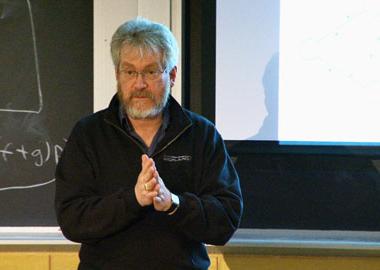 While automakers market increasingly intelligent cars, they may be missing the point. No matter how sophisticated the vehicle’s brain, suggests
While automakers market increasingly intelligent cars, they may be missing the point. No matter how sophisticated the vehicle’s brain, suggests Alex (Sandy) Pentland, the smartest element on the road is still the human driver. In search of safe, responsive vehicles, designers should not think of separate components -- machine and operator -- but rather, an integrated system comprised of two, complementary intelligences.
Tackling this challenge involves analyzing human behavior -- not the traditional purview of engineers who “are scared off by the noise, the randomness of people.” Pentland, on the other hand, has long explored human decision-making in a variety of settings, including car driving. Working with an automaker, he outfitted test vehicles with sensors on the steering wheel, brakes and elsewhere, to “determine predictive signals of driving.” The sensors permitted the analysis of “clusters of behaviors,” so Pentland could figure out with 95% accuracy “what people would do before they did it.” From developing a model of the driver’s behavior, he moved on to neighboring drivers’ patterns, to paint a picture of road interactions and signaling.
This research has resulted in a system now
deployed in Nissan cars as a “safety shield” -- a computer brain that uses predictive knowledge to help “nudge back” a driver who may be straying into the wrong lane, or gently decelerate if the driver is speeding into the car ahead. Pentland’s “general philosophy” about creating an interface between people and an intelligent vehicular system involves recognizing that the human is in charge, never the vehicle, lest “the human stop paying attention.” It is about establishing a “joint control mode” so “car and human are cooperating” in a way that feels natural. Indeed, Pentland notes that there is evidence these sensor systems help people become better drivers.
Beyond this basic work, Pentland is introducing robot “friends” into cars, to help guide a driver’s attention in appropriate ways. He is also extending his intricate models of driving patterns toward better route navigation technology. Pentland builds traffic flow maps that are based on the “conditional dependence” among driving decisions made en route, which may prove extremely helpful in alerting drivers to construction obstacles or other hazards. He has also mapped mobility patterns of certain groups in a city, by monitoring taxi and cell phone use, and can predict where specific groups of people travel, shop and eat. This research could prove useful to urban planners laying out a public transportation grid, and someday, might help in making greener cities or battling epidemics....Read the full article/Watch Video
Beyond this basic work, Pentland is introducing robot “friends” into cars, to help guide a driver’s attention in appropriate ways. He is also extending his intricate models of driving patterns toward better route navigation technology. Pentland builds traffic flow maps that are based on the “conditional dependence” among driving decisions made en route, which may prove extremely helpful in alerting drivers to construction obstacles or other hazards. He has also mapped mobility patterns of certain groups in a city, by monitoring taxi and cell phone use, and can predict where specific groups of people travel, shop and eat. This research could prove useful to urban planners laying out a public transportation grid, and someday, might help in making greener cities or battling epidemics....Read the full article/Watch Video
For more techical information visit our sister website www.engineeringmaintenance.info or for equipment procurement please visit www.engineeringtrader.com

